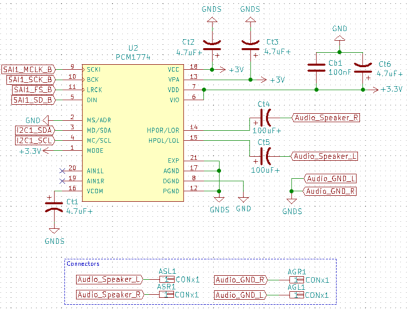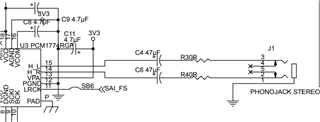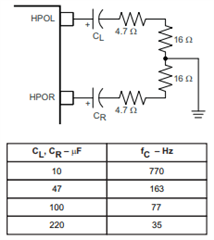Hi,
I am using the PCM1774 audio DAC for a wearable device and I would like to confirm the schematic for Line output instead headphone.
- Do I need to add a resistor of 10K to the HPOL and HPOR for impedance matching because the RL=10k instead 16Ohm for the headphone ?
- Is it good to use 2 separate power supply to feed the analog and the digital part of the chip ? in my case I am using the 3.3V for digital and 3V for analog
- Is there any problem to use SAI instead of I2S ?




